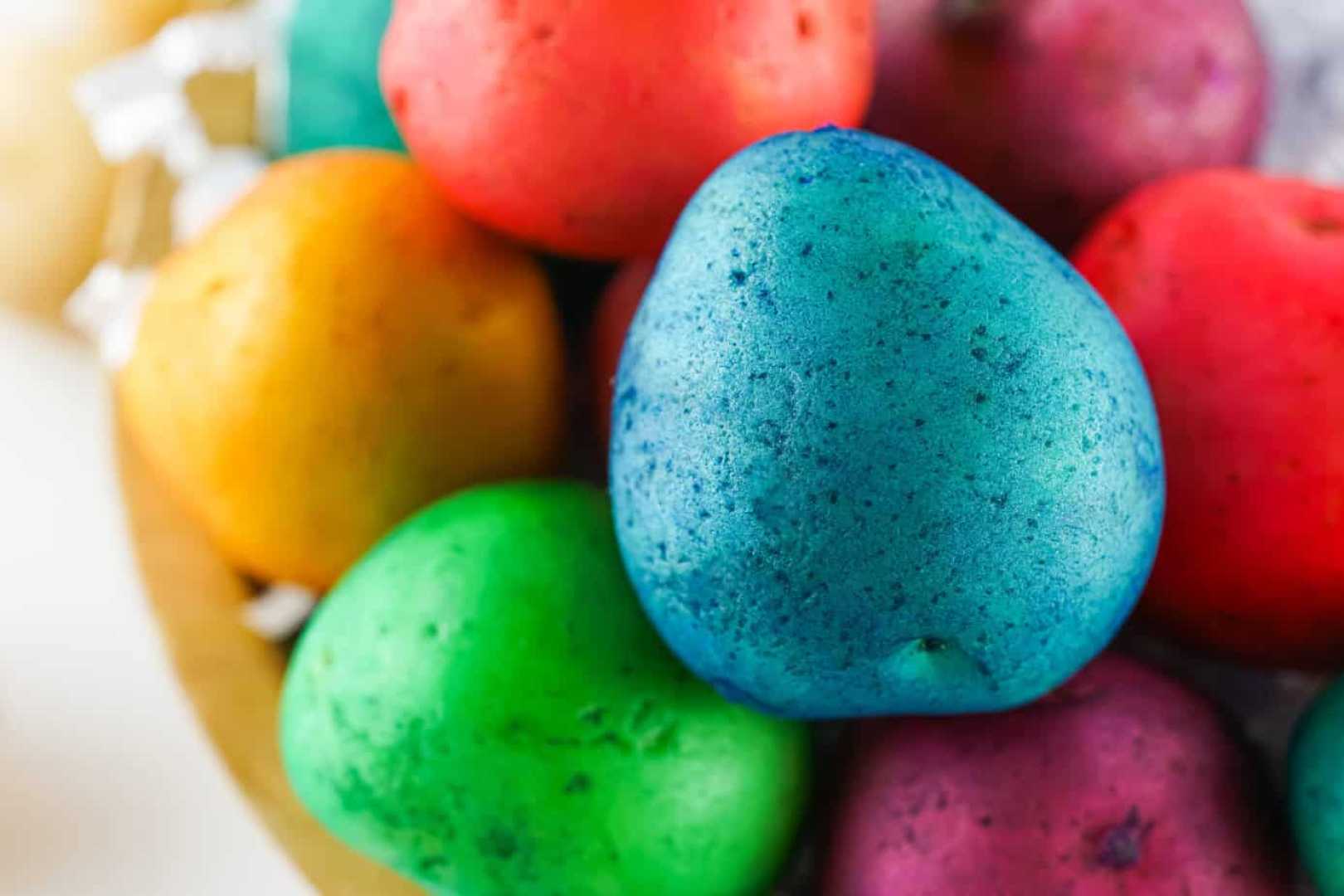Easter Eggs or Potatoes? A Humorous Experiment in Holiday Crafting

Brooklyn, NY — With Easter approaching, many have innovated ways to partake in the beloved tradition of dyeing Easter eggs, but some are turning to unexpected alternatives, like potatoes. This new trend comes as a response to rising prices of eggs and has sparked conversations online about the intersection of creativity and practicality.
The garlic and herb mashed potatoes may be comforting, but this year, they’re taking on a new role as a canvas for dye. Media outlets, including The New York Times, have reported on this trend, highlighting the rising cost of traditional eggs, which averaged $6.23 a dozen last month. Meanwhile, many social media users have been left scratching their heads over the practicality and appeal of potato dyeing.
“Easter Eggs Are So Expensive Americans Are Dyeing Potatoes,” The New York Times noted, while adding that some farmers have also resorted to using plastic replicas for their egg hunts. The creativity of resourceful parents dealing with rising costs has been met with mixed reactions, with some viewing it as an ingenious solution and others seeing it as a poor substitute.
Despite the humor in these attempts, many, including myself, remain skeptical about the potato project. I decided to dive into this culinary experiment out of curiosity. Armed with a dye kit, a dozen eggs, and a bag of Yukon Gold potatoes, I sought to see if this atypical craft could hold its own against the classic Easter egg tradition.
Upon consulting a popular homemaking blog, The Kitchn, I learned to soak potatoes in various natural colors, such as turmeric and blueberries, to achieve the desired vibrant hues. However, the cost proved daunting. Purchasing fruits and vegetables for dyeing was well beyond the promised affordability of this unique endeavor.
Undeterred, I proceeded with my task, painting fine details on the potatoes as I had fondly remembered from my childhood. The boiled eggs emerged brilliantly colored, while the potatoes resembled muddied versions of their vibrant counterparts, failing to evoke the same resurrection-themed joy.
As I baked the potatoes, their skins wrinkled, further distancing them from a celebratory Easter aesthetic and enhancing their foreboding appearance. Placing them alongside my beautifully dyed eggs only highlighted the stark contrast between tradition and improvisation. With statements of “Happy Easter” seeming like an unintended threat, I concluded that this potato project fell short of genuine festivities.
While economic pressures might prompt families to create alternative traditions, it is crucial to recognize that Easter eggs symbolize much more than an ordinary crafty project. Already being a symbol for renewal, they foster an emotional connection rooted intrinsically in joy and celebration. The purity of eggs, their elegance, and their inherent symbolism successfully contribute to the season’s spirit, something that potatoes simply cannot replicate.
However, I concede there may be a faint semblance of truth in drawing parallels between potatoes and eggs as they both represent seeds of life in different forms. But ultimately, my encounter with Easter potatoes felt less like a celebration and more like a creative misfire. In the end, I simply enjoyed the potatoes in their intended culinary function, a much better outcome both for my palate and my Easter experience.
As for traditional egg dyeing, Martha Stewart recently shared simpler methods on her blog, suggesting people use shaving cream instead of traditional dye methods, making the craft less messy. Stewart’s approach emphasizes keeping the festive spirit alive, focusing on the enjoyment rather than the hardships that may accompany the craft.
